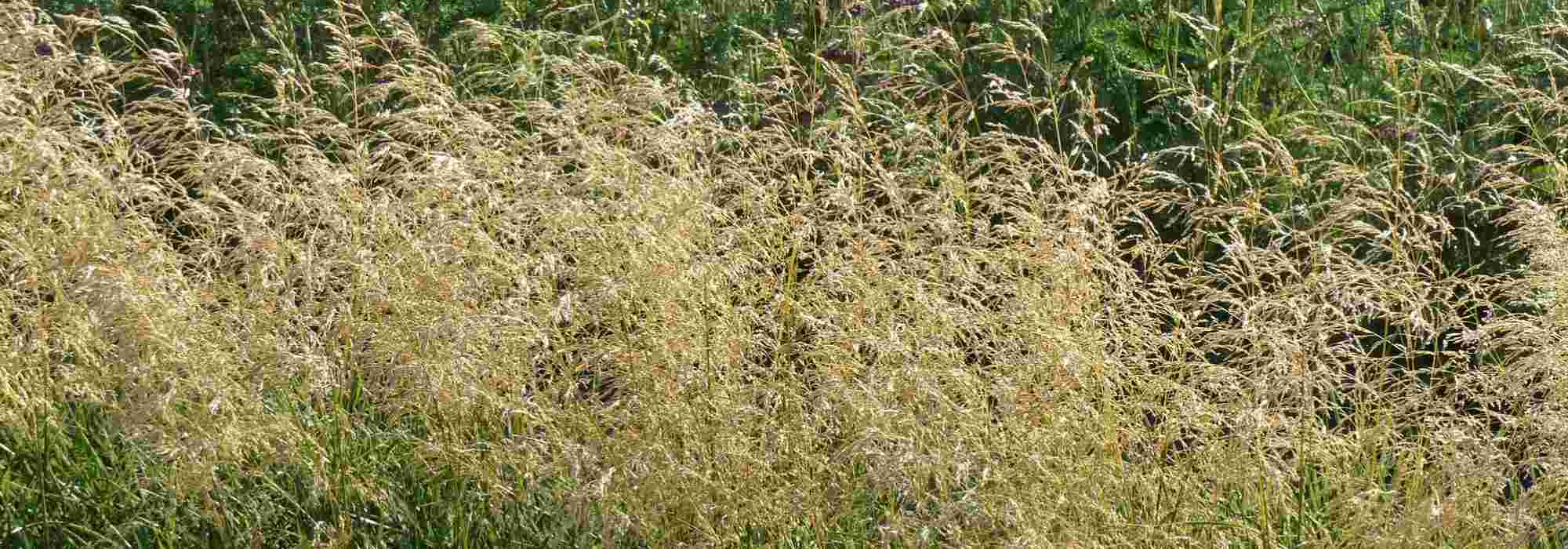
Deschampsia, tufted hair grass: planting, care and companion planting
Contents
Deschampsias in a nutshell
- Ornamental grass Canche brings lightness and movement to the garden.
- Forming tufts with fine, evergreen, trailing foliage, it produces in summer a cloud of airy inflorescences.
- Its translucent spikes catch the light beautifully and are highlighted by winter frost.
- Deschampsia grows in all exposures and in all soils.
- Very easy to grow, it has no pests, requires little care and multiplies by division or sowing.
- Extremely hardy, it can also be grown in pots, and its graphic form makes it suitable for all planting schemes.
A word from our expert
Perennial grass, Deschampsias grow naturally in a wide range of habitats across the world.
Only two species are cultivated for their ornamental value, Deschampsia cespitosa and Deschampsia flexuosa.
Forming clumps 30 to 60 cm in every direction, these plants reach over 1.20 m when in flower.
Used as groundcover, their ornamental interest lies in their fine, airy spikes, produced in abundance in summer. They display shades of green, blonde, purple and bronze before taking on golden and straw hues in autumn. In winter, they remain decorative for a long time, especially when frost emphasises their architectural lines.
Foliage, green or golden depending on variety, is evergreen to semi-evergreen.
Depending on species, they are grown in wet or dry soil, rich or poor. They grow in full sun or light shade, and they are not very sensitive to soil type (alkaline, neutral or acidic).
Extremely hardy, Deschampsias have no enemies. They are very easy to grow and maintain. They multiply by division of clumps in spring or by collecting spontaneous sowings.
Description and botany
Botanical data
- Latin name Deschampsia sp.
- Family Poaceae
- Common name Canches
- Flowering Summer, autumn
- Height 30 x 60 cm (up to 1.20 m in flower)
- Sun exposure Sun, part shade, light shade
- Soil type All soils
- Hardiness Excellent (-20°C)
Deschampsias or Canches are herbs of family Poaceae, commonly known as grasses. They occur worldwide, in temperate-climate zones of both hemispheres and even grow at altitude, including some tropical areas.
Of roughly fifty annual or perennial species, few are cultivated for ornamental purposes. Deschampsia cespitosa (or caespitosa) and Deschampsia flexuosa are the two mainly used for their decorative value.
Canches have very fine, rough foliage. Flat or rolled, leaves may be rough (D. cespitosa) or smooth (D. flexuosa), with slightly sharp-edged margins. They have prominent veins separated by translucent membranes. Evergreen to semi-evergreen depending on winter severity, these grasses form dense clumps with a trailing habit, 30 to 60 cm high and about as wide. Mostly green, cultivars with golden tones also exist, such as Deschampsia ‘Tatra Gold’.
Excellent groundcovers, they are also valued for their loose spikelets, made up of 2 to 4 fertile flowers. These are carried on erect stems and rise from 40 cm to over 1.20 m. Flowering generally occurs in summer, between June and August, but some varieties are later. Thus Deschampsia ‘Tardiflora’ flowers from August to November.
Canche spikes begin in shades of green, paler or darker, sometimes tinged with yellow, gold, purple or bronze. Shades develop to straw yellow or a deeper purple. All capture light beautifully, especially when evening sun backlights them and they are set against a dark background that highlights them. Inflorescences remain decorative into winter and add a dreamlike touch to the garden when dusted with hoarfrost.
Hardy to at least -20 °C, Deschampsias prefer cool soils but tolerate drought once established. Deschampsia cespitosa is suited to heavy, clayey, even marshy or temporarily flooded ground. Deschampsia flexuosa, by contrast, makes do with sandy, free-draining soil and tolerates drought very well.
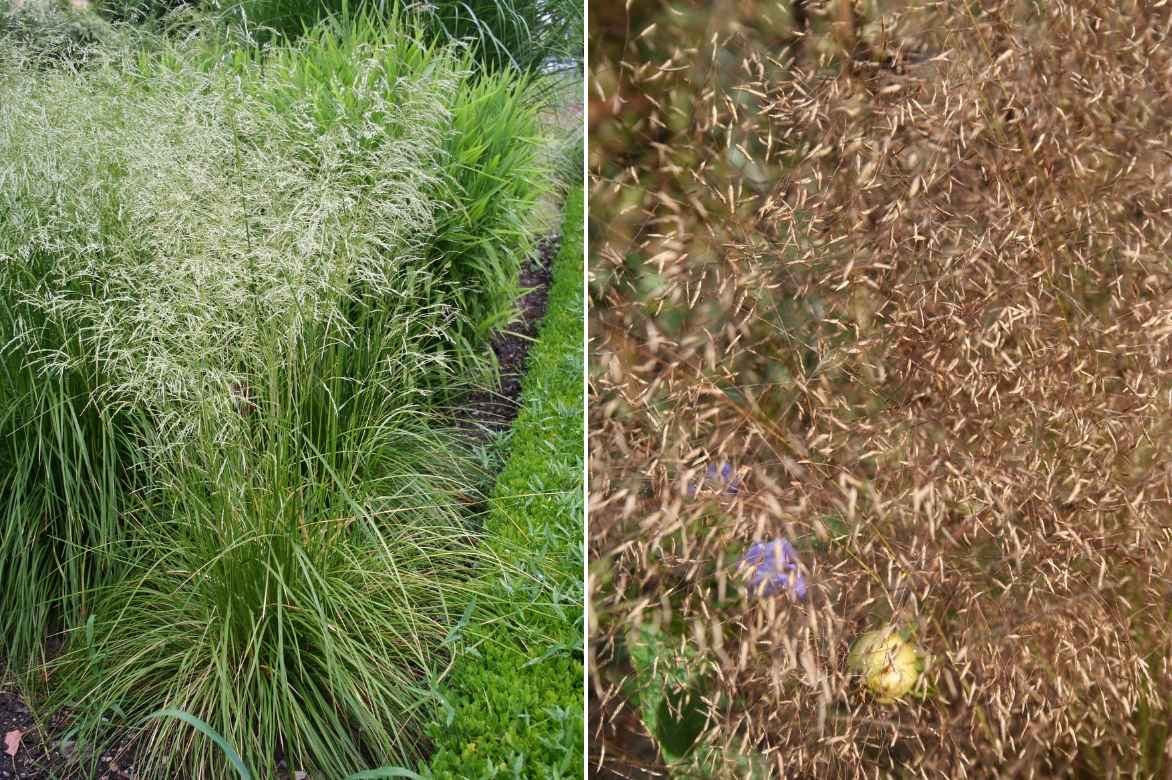
Deschampsia cespitosa ‘Goldschleier’: in July and in November
Undemanding, Canches grow in acid, neutral or calcareous soil. A bright, sunny exposure favours abundant flowering. Cultivation in part shade or light shade is possible but plant is less vigorous there.
This grass is also well suited to container growing, to decorate terraces and balconies.
Very easy to grow, Deschampsias have no pests and require almost no maintenance. Small annual tidy in late winter is sufficient.
Propagation is easy, whether by division of the stump or by collecting spontaneous sowings that occur in cool soil.
Their light, airy appearance and upright habit suit them to many combinations and uses. They fit into romantic or naturalistic gardens alongside roses or perennials, as well as into more contemporary compositions to which they bring rhythm and dynamism.
Different varieties of Deschampsias
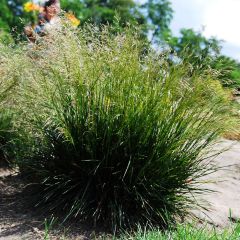
Deschampsia caespitosa
- Flowering time July to November
- Height at maturity 60 cm
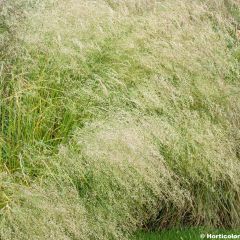
Deschampsia cespitosa Bronzeschleier
- Flowering time July to November
- Height at maturity 80 cm
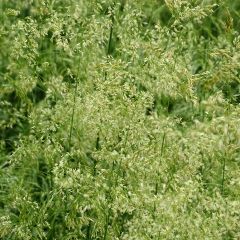
Deschampsia caespitosa Goldschleier
- Flowering time August to November
- Height at maturity 90 cm
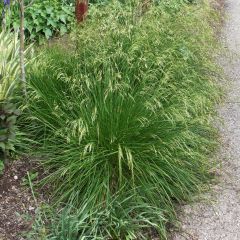
Deschampsia caespitosa Goldtau
- Flowering time August to November
- Height at maturity 45 cm
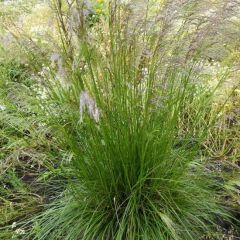
Deschampsia cespitosa Tardiflora
- Flowering time September to December
- Height at maturity 90 cm
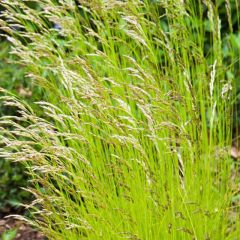
Deschampsia flexuosa Tatra Gold
- Flowering time July to September
- Height at maturity 45 cm
Discover other Deschampsia
View all →Available in 2 sizes
Available in 2 sizes
Available in 2 sizes
Available in 1 sizes
Available in 2 sizes
Available in 2 sizes
Available in 1 sizes
Available in 1 sizes
Available in 1 sizes
Available in 1 sizes
Planting Deschampsia
Where to plant Deschampsias?
Deschampsias perform best in sunny, non-scorching exposure, and in any fresh soil. Cultivation in partial shade or light shade is possible but avoid heavy shade. Once established, tufted hairgrass can tolerate temporary drought. The Deschampsia flexuosa is best suited to dry, acidic soils. Deschampsia cespitosa, for its part, can tolerate heavy, clay, even marshy and temporarily flooded soils.
Tufted hairgrass is very adaptable. All soils suit it, whether rich or poor, acidic, neutral or calcareous.
This grass finds its place in borders, at edge of a water feature as well as in a pot on a terrace or balcony.
When to plant?
Plant preferably in autumn or spring. In colder regions, plant your young plants in spring to give them a season to establish well.
How to plant?
Planting in open ground :
- Soak the rootball in a bucket or basin of water. The young plant must be well soaked before planting.
- Make a hole about twice the size of the rootball, roughly 20 cm in every direction for a 9 cm bucket.
- Mix the excavated soil with a spadeful of well-rotted compost or with potting compost. In poor soil, add a handful of crushed horn to feed the plant in the long term.
- Remove from bucket and place the rootball so that base of foliage is level with soil surface.
- Backfill with remaining soil and firm lightly.
- Water generously immediately after planting and during first weeks, especially in dry weather.
- Mulch to a depth of about 5 cm (shredded branches, flax or hemp fibres, dry grass clippings, cocoa shells…). For a modern, mineral look, choices are also wide (slate chips, crushed brick, gravel, sand…).
Planting in a pot :
- Immerse the young plant in a generous volume of water until evenly moist.
- Choose a pot at least 40 cm across. Ensure drainage holes are present at base of pot.
- Place shards of old terracotta pots over drainage holes, then cover with a 5 cm drain layer (gravel, clay pebbles…). Lay a geotextile felt cut to size over this drain layer. This prevents potting soil being washed out during watering.
- Mix equal parts garden soil and potting compost. Add a handful of compost and a handful of crushed horn.
- Fill the pot with the mix and place your tufted hairgrass without burying the foliage (its base should be level with substrate). Firm lightly.
- Leave 2–3 cm between substrate and rim of pot to allow for mulching and effective watering.
- Water several times, in small amounts, until water runs out of bottom of pot.
- Apply a mulch organic (wood chips, cocoa or buckwheat husks…) or mineral (gravel, pebbles, slate…) up to rim of container.
In a pot, monitor watering throughout season. As soon as top centimetres of soil are dry, water again.
When the young plant completely fills the pot (after about 3 or 4 years on average), it is time to divide the clump and replant in fresh substrate.
Caring for Deschampsias
Deschampsias require very little care. At the end of winter, clean the clump by combing the foliage. Do this by hand (wear gloves as the leaves can be a little sharp), with a rake or a cat comb. Be gentle so as not to uproot the plant. Remove old, dried foliage and, if any stems remain, cut them back to their base, at the level of the foliage.
Add compost and top up mulch as needed.
In open ground, except in cases of severe, prolonged drought, tufted hairgrasses are content with rain water. However, water regularly during first year, while the root system is not yet well developed.
In a pot, simply let the potting compost dry out between waterings but do not let your plant become thirsty, it will lose its beauty. Every spring, add compost (one to two handfuls per pot) and work it in by lightly scratching the surface. Divide your tufted hairgrass when it becomes pot-bound in its container (on average every 3 or 4 years).
Propagating Deschampsias
Self-seeded sowings
In fresh soil, Deschampsias self-seed without becoming invasive. Collect these self-seeded sowings using a trowel, keeping a small volume of soil around the roots.
Replant them immediately elsewhere in the garden. Mulch and water.
Ensure young plants do not suffer from drought during the first few weeks.
Clump division
Clump division is carried out in early spring.
- Cut around the plant using a sharp spade, about 10 cm from the base.
- Lift the grass clump, keeping as much soil as possible around the roots.
- Using the spade or a knife, slice to form several divisions. The larger these are, the quicker you will obtain young plants of a good size.
- Replant the divisions immediately in their final position.
- Water and mulch.
Companion planting with Deschampsias
Because of their airy, light habit and ease of cultivation, Deschampsias offer many possibilities for combinations.
In all cases, position them so that light illuminates them from behind. Low, raking late-afternoon light enhances them, especially when set against a backdrop of dark foliage.
For a naturalistic effect, pair them with other grasses that have decorative spikes, such as Miscanthus, Pennisetum or Stipa. Add touches of colour with Heleniums, Echinaceas, Gauras and Asters.
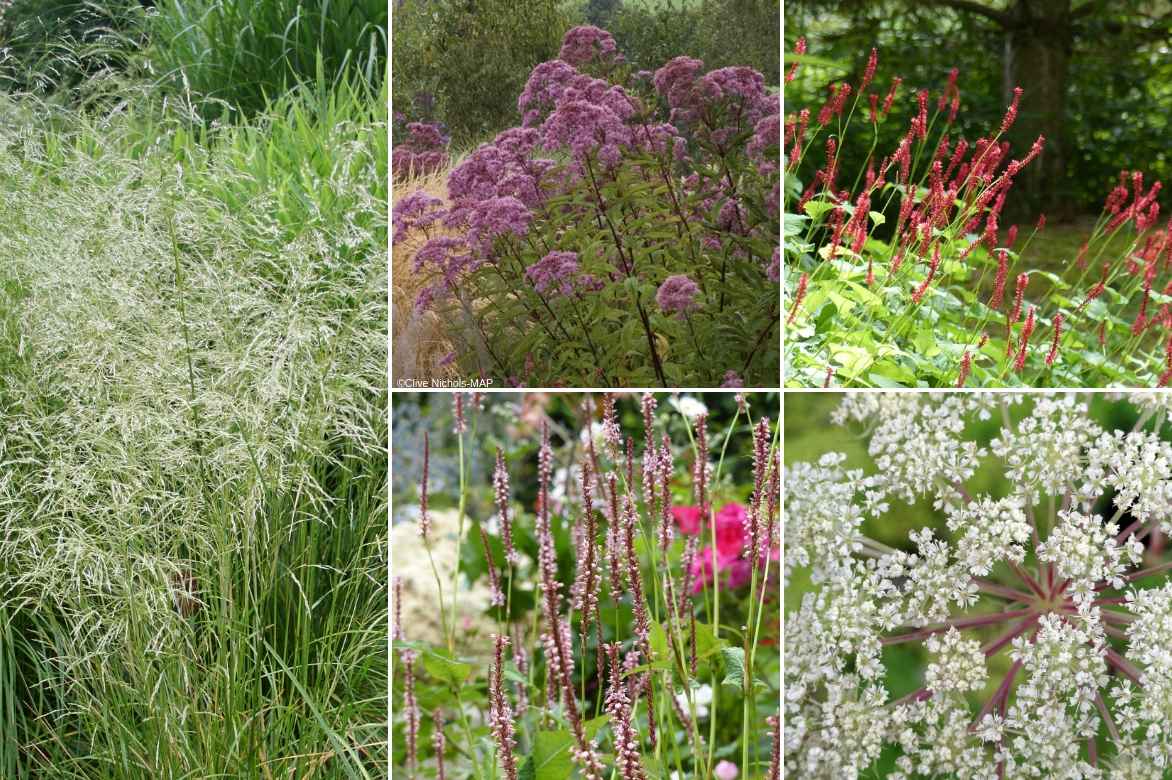
An idea for a combination: Deschampsia cespitosa ‘Goldschleier’, Eupatorium maculatum ‘Atropurpureum’, Persicaria amplexicaulis ‘Firetail’ (or ‘Caliente’, ‘Black Field’, ‘Fat Domino’…), Persicaria amplexicaulis ‘Rosea’ and Selinum wallichianum
Deschampsias also work wonderfully with the flowerheads of Achilleas and Verbena bonariensis.
In a romantic-style garden, drape roses’ flowers with their airy spikes, alongside hardy geraniums and Persicarias. Punctuate scene with round heads of ornamental alliums or Agapanthus.
Bring out their golden blond tones beside trees and bushes that turn red or orange in autumn such as Smoke Bush, Viburnums or Dogwoods.
As their spikes appear fairly late in the season (summer), accompany their loose tufts with groups of spring bulbs and perennials that flower earlier, such as Baptisia, Aquilegias or Euphorbias.
In a generously sized pot, create a mini decorative garden that lasts for many months. For example, combine a Deschampsia with Calibrachoas or annual Lobelias. Complete with a specimen of Euphorbia ‘Diamond Frost’, another annual with very long flowering. Finally, provide a counterpoint to the verticality of the Deschampsia spikes with the silver foliage and trailing habit of Dichondra Silver Falls.
Useful resources
- Discover our range of Deschampsias!
- Discover our ideas for pairing Deschampsia
- Our selection of ornamental grasses is here.
- Video tip: divide an ornamental grass.
- Subscribe!
- Contents
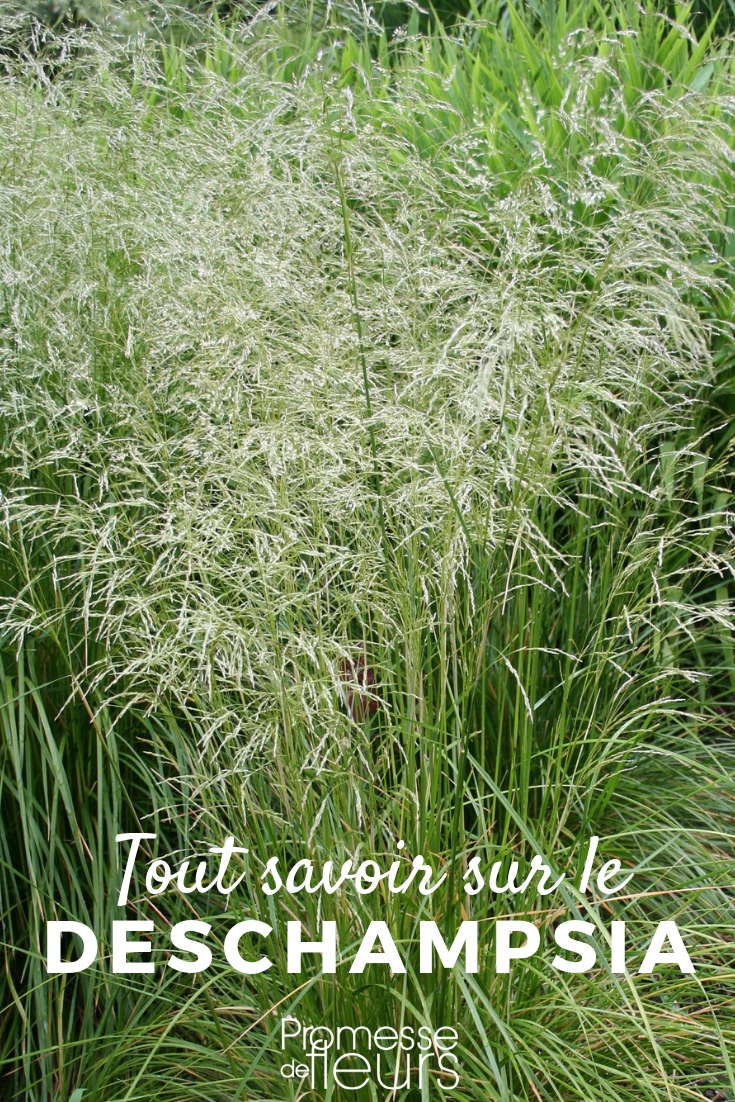



































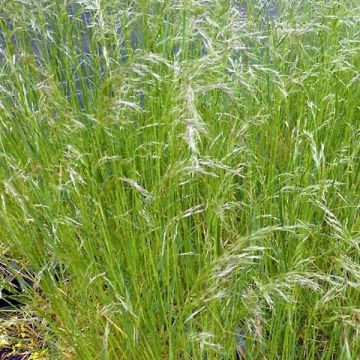



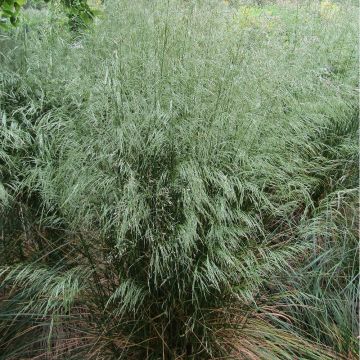
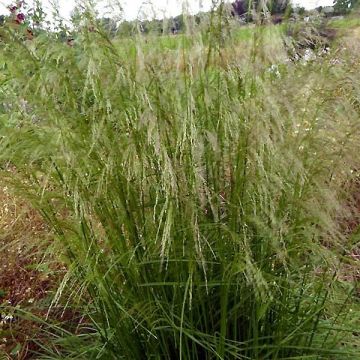
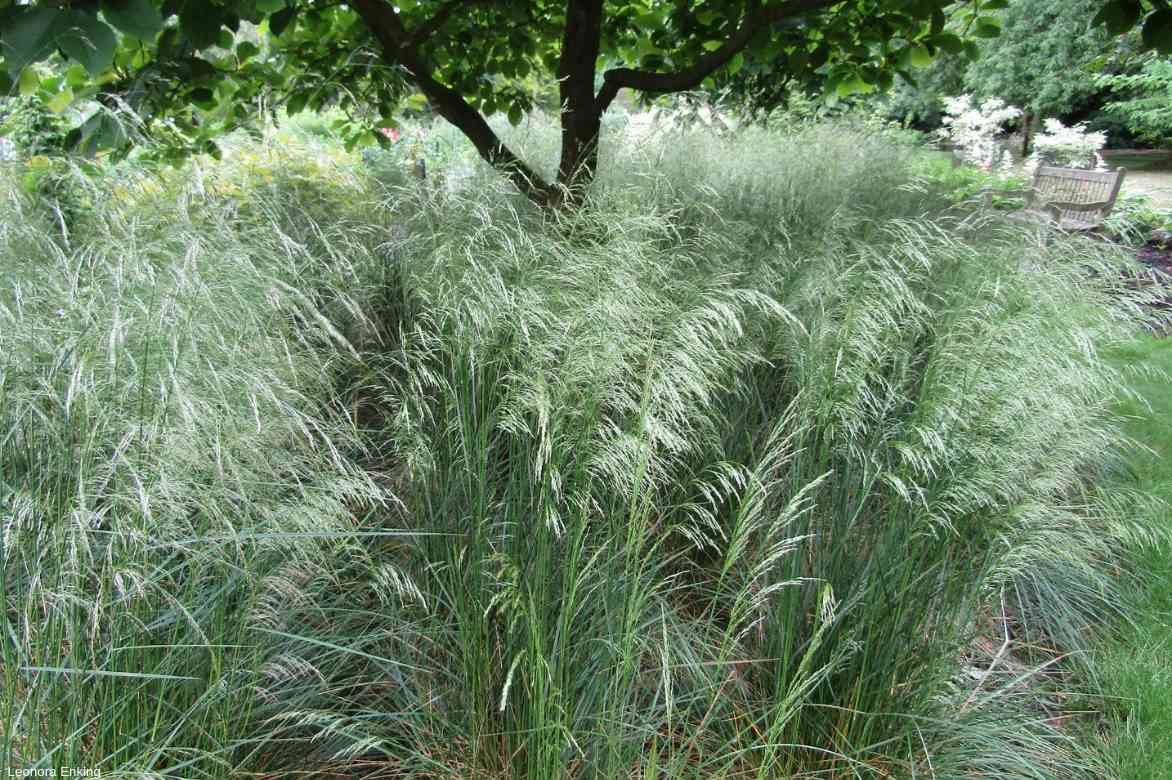
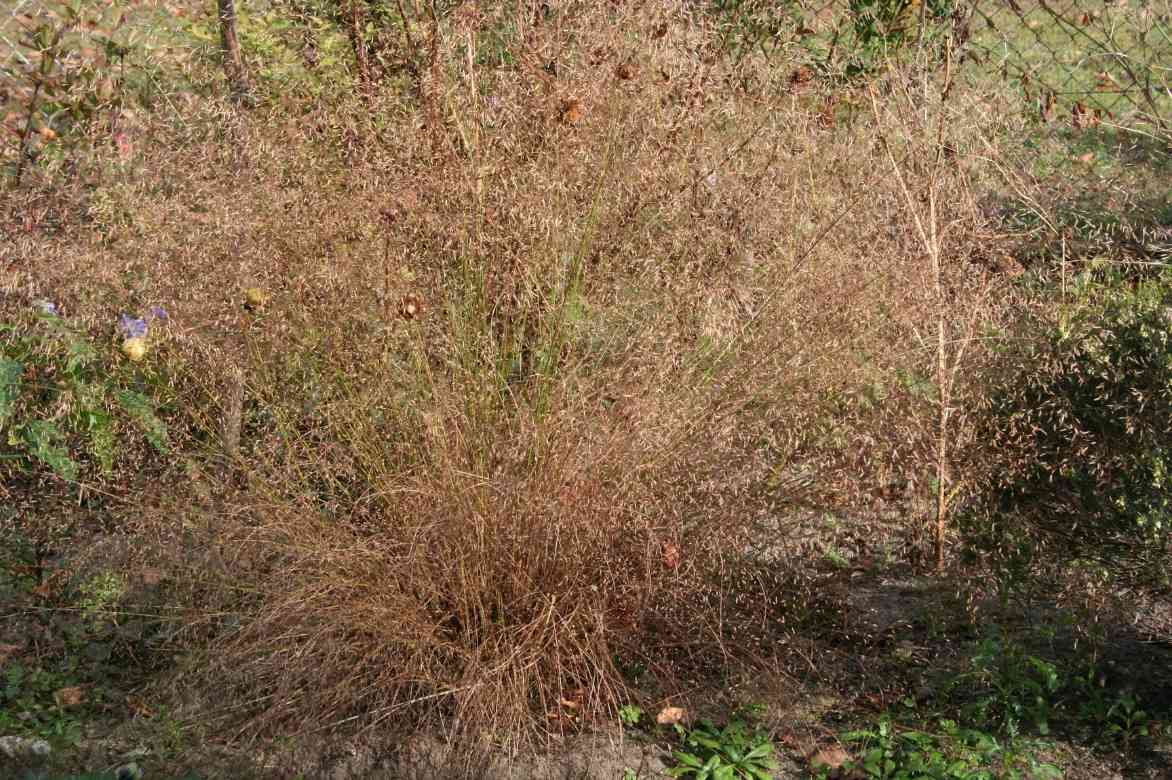
Comments